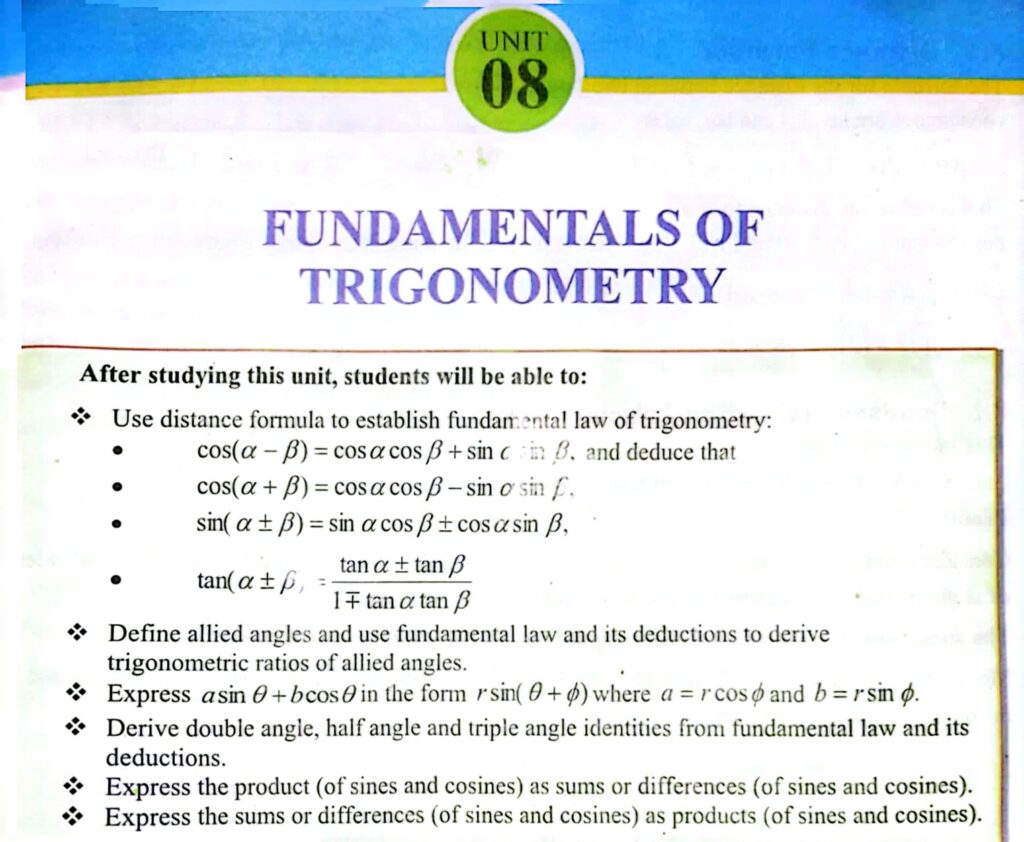
Chapter 08: Fundamentals of Trigonometry
Solutions of National Book Foundation for class 11, NBF. Federal Board (FBISE), National Book Foundation. Trigonometric identities are equations that involve trigonometric functions and hold true for all values of the variables involved. These identities are essential tools in solving various mathematical problems involving trigonometric functions. There are several types of trigonometric identities, including reciprocal identities, quotient identities, Pythagorean identities, even-odd identities, sum and difference identities, and double angle identities. Reciprocal identities are equations that relate the reciprocal trigonometric functions, such as sine and cosecant, cosine and secant, and tangent and cotangent. For example, the reciprocal identity for sine and cosecant is sinθ = 1/cscθ. Quotient identities relate the trigonometric functions that involve a quotient, such as tangent and cotangent or sine and cosine. For example, the quotient identity for tangent and cotangent is tanθ = sinθ/cosθ = 1/cotθ. Pythagorean identities relate the square of the three basic trigonometric functions, sine, cosine, and tangent. For example, the Pythagorean identity for sine and cosine is sin²θ + cos²θ = 1. Even-odd identities relate the values of trigonometric functions with respect to the symmetry of the unit circle. For example, the even-odd identity for sine is sin(-θ) = -sinθ. Sum and difference identities relate the values of trigonometric functions of the sum or difference of two angles. For example, the sum identity for sine is sin(α + β) = sinαcosβ + cosαsinβ. Double angle identities relate the values of trigonometric functions of an angle twice as large as the original angle. For example, the double angle identity for sine is sin(2θ) = 2sinθcosθ. Trigonometric identities are essential tools in solving problems involving trigonometric functions. By applying these identities, we can simplify expressions and solve equations involving trigonometric functions.
This multiple-choice quiz is designed for 1st-year students of the Federal Board based on Chapter 8 (Fundamentals of Trigonometry) from the National Book Foundation syllabus.
Why You Should Take This Test?
✅ Exam-Focused MCQs – Designed exactly as per board paper patterns.
✅ Covers All Key Topics – Trigonometric ratios, identities, quadrants, angles, and applications.
✅ Boost Your Problem-Solving Skills – Strengthen your grip on concepts that appear in exams.
✅ Essential for Top Scores – A perfect way to test yourself before the final exams.
Contents & summary
Introduction
- Fundamental Law of Trigonometry
- Deductions from Fundamental Law
- Trigonometric Ratios of Allied Angles
- Further Application of Basic Identities
- Double angle Identities
- Half angle Identities
- Triple angle Identities
- Sums, Difference and Product of Sines and Cosines


